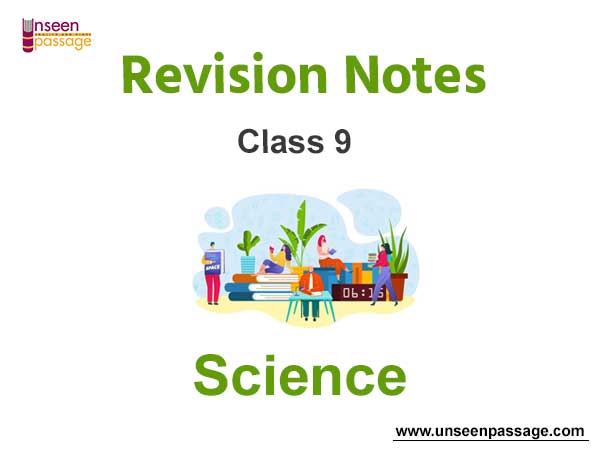Drainage Class 9 Social Science Notes
•‘Drainage’ is a term signifying the river system of an area.
• A drainage basin or river basin is an area which is drained by a single river system.
• An upland that separates two drainage systems that are next to each other is called a water divide.
• On the basis of origin there are two river systems of India — The Himalayan rivers and the Peninsular rivers.
• Himalayan rivers are rain fed and snowed, so they have water in them throughout the year, i.e. they are perennial.
• Himalayan rivers create meanders, oxbow lakes and other depositional features on their course.
• Peninsular rivers are seasonal; mostly depending on rainfall.
• Most of the rivers of peninsular India originate in the Western Ghats and flow towards the Bay of Bengal.
The Himalayan Rivers
• A river along with its tributaries may be called a river system.
• The major Himalayan rivers are the Indus, the Ganga and the Brahmaputra.
The Indus River System
• Rising near Lake Mansarovar in Tibet, the Indus enters India in the Ladakh district of Jammu and Kashmir.
• Rivers Satluj, Beas, Ravi, Chenab and Jhelum join Indus near Mithankot, Pakistan and flow southwards to fall into the Arabian Sea, east of Karachi.
• With a total length of 2900 km, the Indus is one of the longest rivers of the world.
The Ganga River System
• The headwaters of the Ganga are called ‘Bhagirathi’.
• Bhagirathi is fed by the Gangotri Glacier and joined by the Alaknanda at Devprayag.
• Ganga meets the tributaries from the Himalayas such as Ghaghara, Gandak and Kosi.
• A major river Yamuna, arising from Yamunotri Glacier in the Himalayas, joins Ganga at Allahabad.
• Other tributaries — Chambal, Betwa and Son — come from Peninsular uplands to join Ganga.
• Ganga is joined by Brahmaputra and flows through Bangladesh to reach the Bay of Bengal.
• The delta formed when the Ganga and the Brahmaputra flow into the Bay of Bengal is known as the Sunderban Delta.
• The length of the Ganga is over 2500 km and it develops large meanders.
The Brahmaputra River System
• Originating in Tibet, very close to the sources of Indus and Satluj, Brahmaputra enters India in Arunachal Pradesh to flow to Assam joined by many tributaries.
• The tributaries that join Brahmaputra are Dibang, Lohit, and Kenula.
• The Brahmaputra has a braided channel in its entire length in Assam to form many reverine islands.
• Unlike other north Indian rivers, the Brahmaputra is marked by huge deposits of silt on its bed, causing the riverbed to rise.
The Peninsular Rivers
• The major rivers of the peninsula — Mahanadi, Godavari, Krishna and Kaveri — flow eastwards to drain into the Bay of Bengal.
• The Tapi and Narmada are the only rivers which flow west to make estuaries and drain into the Arabian Sea.
• The drainage basins of the peninsular rivers are comparatively small in size.
The Godavari Basin
• Godavari begins in Nasik district of Maharashtra and is the largest peninsular river.
• Its large basin covers most parts of Maharashtra, Madhya Pradesh, Orissa and Andhra Pradesh.
• The tributaries which join the Godavari include Purna, Wardha, Pranhita, Manjra, Wanganga and Penganga.
• Because of its length and the area it covers, Godavari is also known as the Dakshin Ganga.
• Godavari drains into the Bay of Bengal.
The Mahanadi Basin
• The Mahanadi, a 860 km long river, rises in Chhattisgarh to flow through Orissa to reach the Bay of Bengal.
• Mahanadi river basin is shared by Maharashtra, Orissa, Jharkhand and Chhattisgarh.
The Krishna Basin
• The 1400 km long Krishna river rises from a spring near Mahabaleshwar to reach the Bay of Bengal.
• The tributaries of Krishna include Bhima, Musi, Ghatprabha, Koyana and Tungabhadra.
The Krishna basin is shared by Maharashtra, Karnataka and Andhra Pradesh.
The Narmada Basin
• Rising in the Amarkantak hills, Narmada flows to create a gorge in marble rocks of Madhya Pradesh.
• Narmada flows towards the west in a rift valley formed due to faulting.
The Tapi Basin: Originating in Betul, Madhya Pradesh, Tapi flows through a basin that covers Madhya Pradesh, Gujarat and Maharashtra. The main west flowing rivers are Sabarmati, Mahi, Bharatpuzha and Periyar.
The Kaveri Basin: Originating in the Brahmagiri range of the Western Ghats, the Kaveri reaches the Bay of Bengal at Kaveripatnam, sharing its basin with Karnataka, Tamil Nadu and Kerala.
Lakes
• Most lakes are permanent while other contain water only during the rainy season.
• Some lakes are result of the glacial action and ice sheets and some may have been formed by wind, river action and human activities.
• A river meandering across a floodplain forms cut-offs that later develop into oxbow lakes.
• Glacial lakes are formed when glaciers dig out a basin which is later filled with snowmelt.
• Some lakes like Wular Lake in Jammu and Kashmir result from tectonic activity.
• Apart from natural lakes, the damming of the rivers for the generation of hydel power has also led to the formation of lakes.
• Lakes help to regulate river water flow, prevent flooding, aid to develop hydel power, moderate climate, maintain aquatic ecosystem, enhance natural beauty, develop tourism and provide recreation.
Role of rivers in the economy
• Rivers are natural sources of water.
• Settlements on the river banks have developed into cities.
• Rivers are used for irrigation, navigation, hydro-power generation, all vital for India, an agricultural economy.
River Pollution
• Quality of river water is affected by the growing domestic, municipal, industrial and agricultural demand.
• A heavy load of untreated sewage and industrial effluents are emptied into the river affecting the river’s self-cleansing property.
• Concern over rising pollution in our rivers led to the launching of various action plans to clean the rivers.




